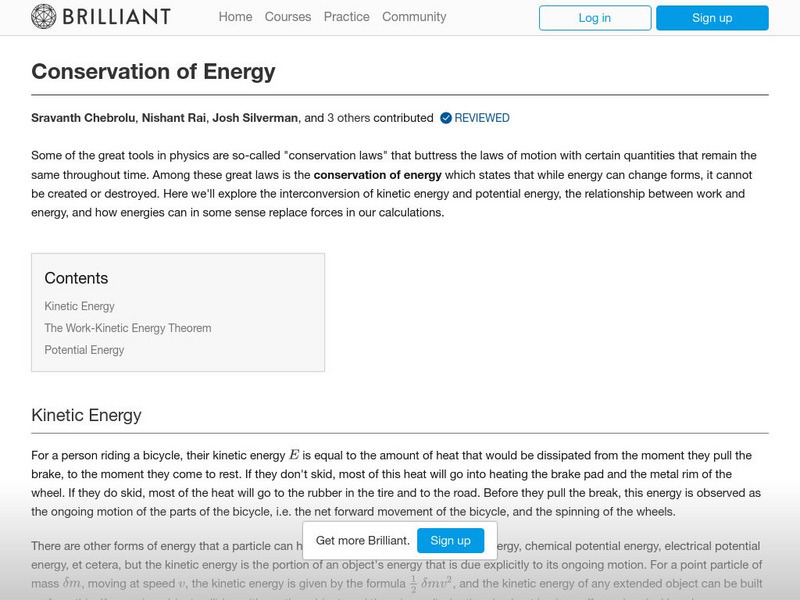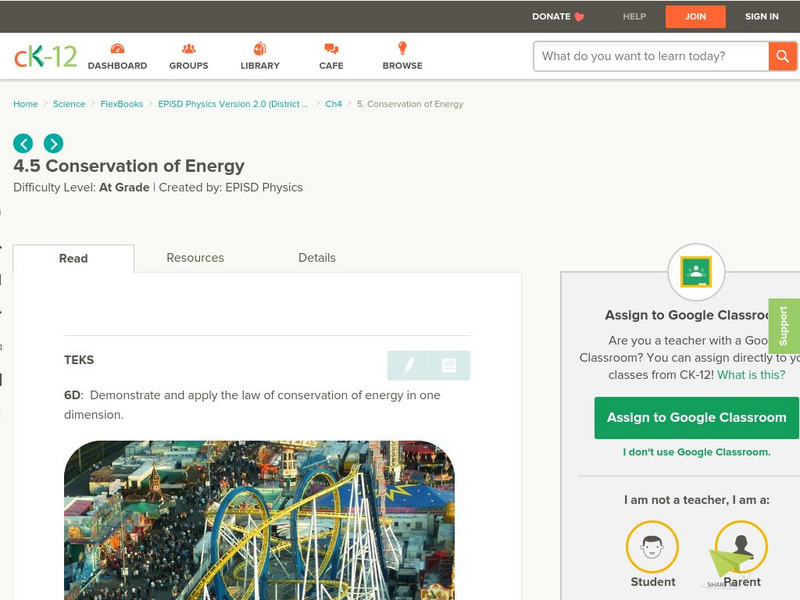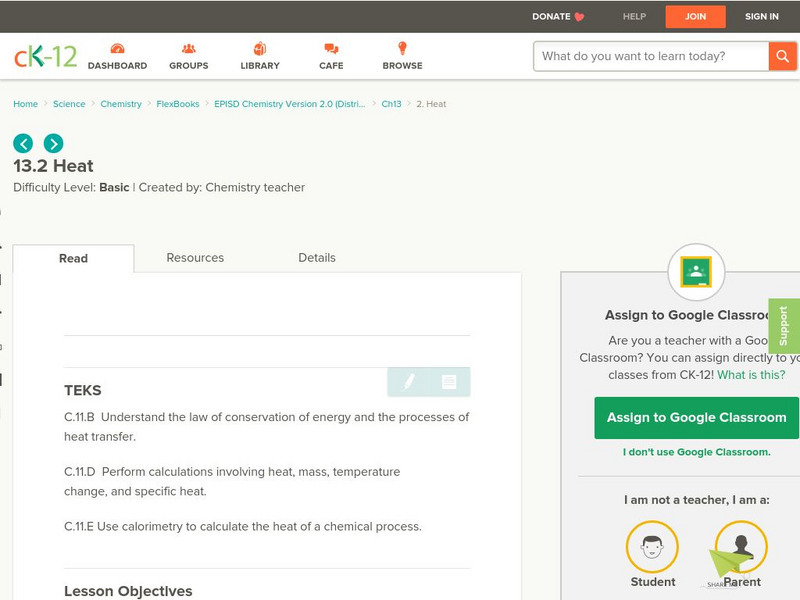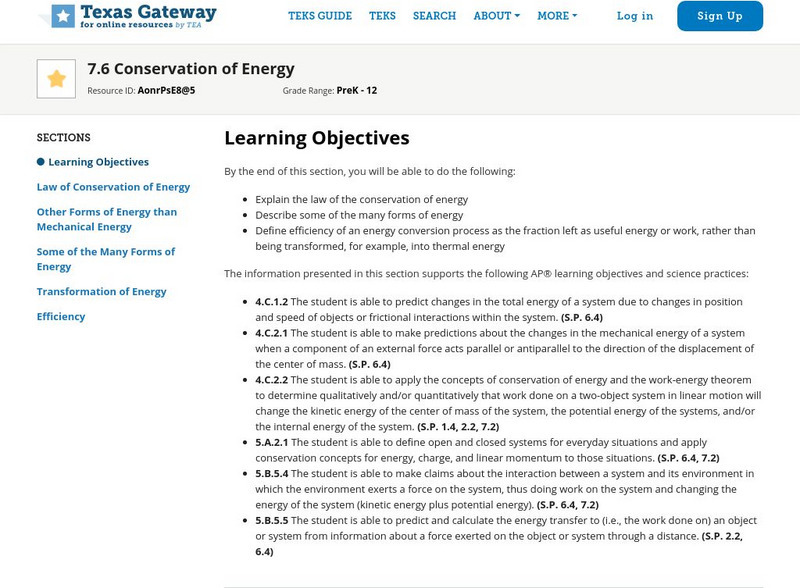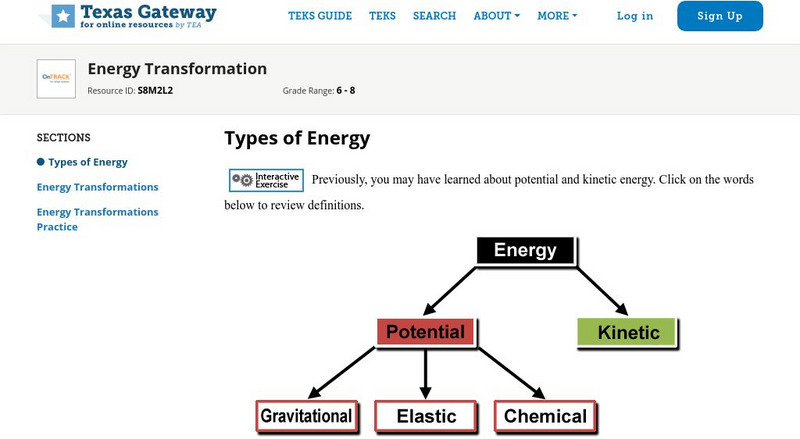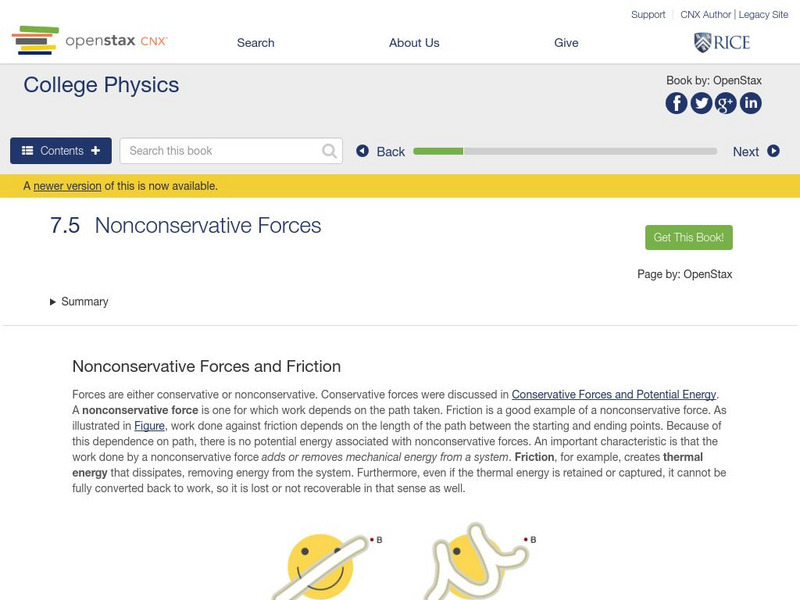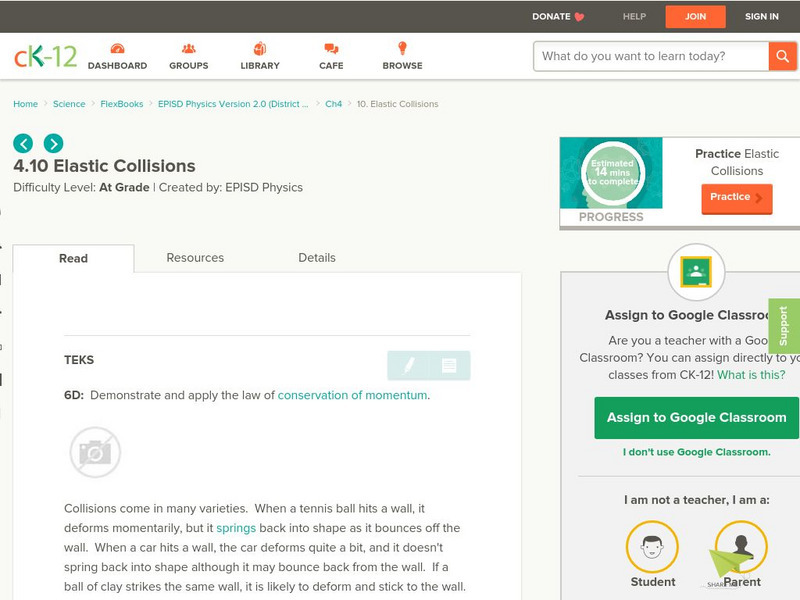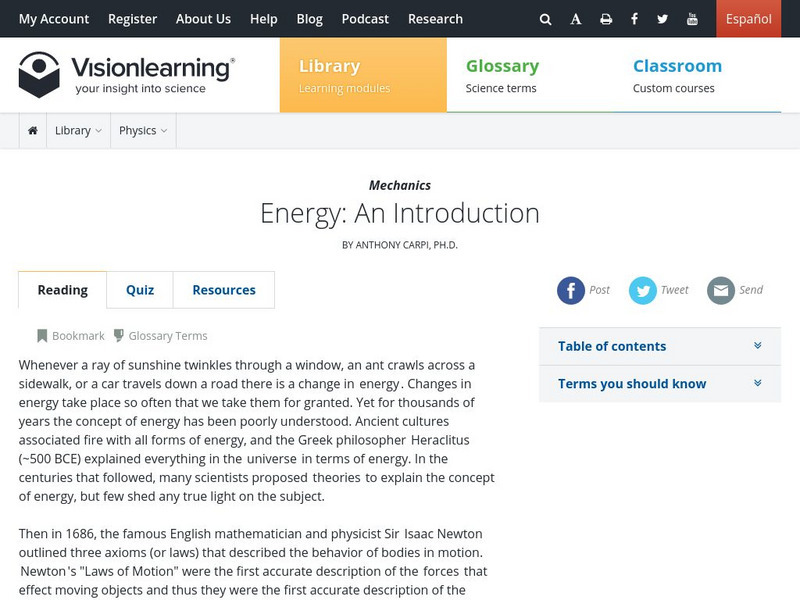Hi, what do you want to do?
PBS
Blow the Roof Off!
Blow the minds of young scientists with this collection of inquiry-based investigations. Based on a series of eight videos, these "hands-on, minds-on" science lessons engage young learners in exploring a wide range of topics...
Columbus City Schools
The Magic of Energy: A Disappearing Act?
Using the 5E method for teaching about kinetic energy, potential energy, and conservation of energy, this two-week unit with many videos and possible extensions is sure to keep pupils engaged as they are learning.
University of Florida
Understanding Car Crashes: It's Basic Physics!
Make an impact on young physicists with this fun collection of resources. After first watching a video and taking notes on the physics of car crashes, students go on to complete a series of activities that explore the...
Norwich Institute for Language Education
Simple Machines
Planning a unit on simple machines? Save some time and energy with this collection of lessons and activities that explores how these devices are used in the real world to make life a little easier.
College Board
AP Physics 1 and 2 Inquiry-Based Lab Investigations
Have you ever wondered what type of AP Physics investigations The College Board wants? This is the guide for you! Sixteen labs covering both Physics I and II will get you started and inspire you to meet the requirement of 25 percent of...
Texas Commission on Environmental Quality
Environmental Sciences
Whether you are teaching environmental science in junior high or studying recycling in kindergarten, there is something for all in this set of lessons designed for environmental education. The 110-page packet comes with tips for...
Essential Energy
Being a Safety Star (Stage 3)
A spark of static electricity contains up to 3,000 volts, while a lightning strike contains around 3,000,000 volts. To understand electricity, its power, and the safety considerations relating to it learners engage in a comprehensive...
Teach Engineering
Solar Water: Heat it Up!
Young engineers are instructed to design and build their own solar water heaters. Then, they calculate the efficiency and cost and compare them to commercially available models. This is a full unit for pupils to apply their knowledge.
Texas Education Agency
Texas Gateway: Law of Conservation of Energy: Heat Transfer
Given illustrations, scenarios, descriptions, and/or diagrams, students will demonstrate understanding of heat transfer.
Texas Education Agency
Texas Gateway: Rotational Kinetic Energy: Work and Energy Revisited
By the end of this section, you will be able to derive the equation for rotational work, calculate rotational kinetic energy, and demonstrate the law of conservation of energy.
Physics Classroom
The Physics Classroom: The Work Energy Theorem
This page explores the quantitative relationship between work and mechanical energy in situations in which there are no external forces doing work. It is a basic analysis of situations in which mechanical energy is conserved. Examples...
Other
Brilliant: Conservation of Energy
Discusses conservation of energy, and explains what kinetic energy is, some kinds of potential energy, and how work and energy are related using the work-kinetic energy theorem. Provides lots of examples along with calculations.
CK-12 Foundation
Ck 12: Conservation of Energy
[Free Registration/Login may be required to access all resource tools.] In this online tutorial students are asked to demonstrate and apply the law of conservation of energy in one dimension.
Texas Education Agency
Texas Gateway: Matter and Energy: Chemical Equations
Explore balanced chemical equations in this tutorial. Tutorial includes videos, interactive activities, and practice to help students understand balanced chemical equations and the Law of Conservation of Mass.
CK-12 Foundation
Ck 12: Heat
[Free Registration/Login may be required to access all resource tools.] Using the law of conservation of energy as a starting off point, students use the specific heat equation to perform calculations that relate mass, specific heat,...
Texas Education Agency
Texas Gateway: Ap Physics: Conservation of Energy
By the end of this section, you will be able to explain the law of the conservation of energy; describe some of the many forms of energy; and define efficiency of an energy conversion process as the fraction left as useful energy or...
CK-12 Foundation
Ck 12: Conservation of Energy
[Free Registration/Login may be required to access all resource tools.] Students investigate how all types of energy, including work, relate to each other and are conserved in a closed system.
CK-12 Foundation
Ck 12: Physical Science: Conservation of Energy in Chemical Reactions
[Free Registration/Login may be required to access all resource tools.] Describes the law of conservation of energy and how energy is conserved in chemical reactions.
Texas Education Agency
Texas Gateway: Energy Transformation
Given descriptions, illustrations, or scenarios, students will identify energy transformations, such as how energy in a flashlight battery changes from chemical energy to electric energy to light energy.
CPALMS
Florida State University Cpalms: Florida Students: Conservation of Energy
Learn about the Law of Conservation of Energy.
OpenStax
Open Stax: Nonconservative Forces
In the following interactive students will begin to define nonconservative forces and explain how they affect mechanical energy. They will show how the principle of conservation of energy can be applied by treating the conservative...
CK-12 Foundation
Ck 12: Elastic Collisions
[Free Registration/Login may be required to access all resource tools.] In this online tutorial students are asked to demonstrate and apply the law of conservation of momentum.
Vision Learning
Visionlearning: General Science: Energy: An Introduction
Instructional module focusing on energy. Discussion includes forms of energy, conservation of energy, and the laws of thermodynamics. Site also includes an interactive practice quiz and links relating to the topic.
Texas Education Agency
Texas Gateway: Ap Physics: Conservative Forces and Potential Energy
By the end of this section, you will be able to define conservative force, potential energy, and mechanical energy; explain the potential energy of a spring in terms of its compression when Hooke's law applies; and use the work-energy...
















